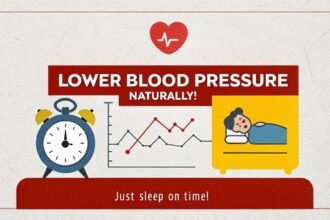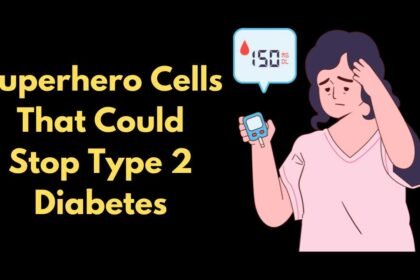When most people in the U.S. think about weight loss, their first goal is usually a slimmer waistline. But while we focus on the fat we can see, there’s another, more dangerous type of belly fat hiding deep inside our bodies visceral fat.
Unlike the fat just under your skin, visceral fat wraps around your internal organs, releasing inflammatory compounds that increase your risk of heart disease, diabetes, and even early death.
The good news? While stubborn belly fat might feel impossible to shed, visceral fat actually responds faster to the right lifestyle changes.
With the right plan, you can burn fat, shrink your waistline, and improve your overall health in as little as 30 days.
Let’s break down what science says about visceral fat, how your diet and exercise habits affect it, and the exact strategies you can use to start losing it today.
Why Visceral Fat Is More Dangerous Than Normal Belly Fat
Most people worry about how their stomach looks in the mirror, but what you can’t see may be far more harmful.
Unlike subcutaneous fat (the soft fat under your skin), visceral fat builds up around your liver, pancreas, and intestines.
This type of fat doesn’t just sit there – it’s metabolically active. It pumps out harmful molecules that:
- Raise inflammation levels in your body.
- Increase blood sugar and insulin resistance.
- Raise your risk of cardiovascular disease.
That’s why someone who doesn’t appear “overweight” can still have high levels of visceral fat and face serious health risks.
Why Liposuction Won’t Work (But Lifestyle Will)
Here’s something many Americans don’t realize: you can’t surgically remove visceral fat. Liposuction only targets subcutaneous fat under the skin.
The only way to reduce visceral fat is through diet, exercise, and lifestyle changes. The silver lining?
Visceral fat is often the first type of fat your body burns off when you enter a calorie deficit. Even modest weight loss, just 10 pounds can shrink visceral fat stores by up to 30%.
How Diet Choices Affect Visceral Fat
Unlike subcutaneous fat, visceral fat isn’t only about calories. The types of foods you eat play a huge role in whether your body stores more of it.
1. Saturated vs. Unsaturated Fat
A 2014 study compared two groups of adults who each consumed 750 extra calories per day from muffins.
One group ate muffins made with saturated fat (found in butter and fatty meats), while the other group’s muffins used polyunsaturated fat (from foods like fish, nuts, and seeds).
Both groups gained weight, but the saturated fat group gained double the visceral fat. Meanwhile, the polyunsaturated fat group not only gained less fat but also increased lean muscle.
Practical tips for Americans:
- Limit saturated fat intake to around 20–30 grams per day.
- Swap fatty cuts of beef like ribeye for leaner options like sirloin.
- Add more salmon, tuna, walnuts, and flaxseeds to your diet.
- Grass-fed meats are slightly better, but not necessary if budget is a concern.
2. Added Sugar and Fructose
Added sugar, especially in the form of fructose (like high fructose corn syrup)—is another big driver of visceral fat.
In a 2009 study, participants who consumed sugary drinks with fructose gained significantly more visceral fat than those who consumed glucose-based drinks.
But here’s the important distinction: fruit contains fructose, but it also has fiber and water, which prevent overconsumption. The real culprits are sweetened foods and drinks like:
- Soda, bubble tea, and flavored coffee creamers.
- Cereal, granola, and sweetened yogurt.
- Juice, jam, and condiments like ketchup.
Simple swaps to burn fat faster:
- Replace sugary coffee creamers with a scoop of flavored protein powder mixed in milk.
- Swap caramel popcorn or candy snacks for air-popped popcorn topped with protein powder and sugar-free syrup.
- Choose unsweetened yogurt and mix in fresh berries for natural sweetness.
3. The Power of Protein
Increasing protein intake is one of the most effective dietary strategies for weight loss and fat reduction. Protein keeps you full, reduces cravings, and helps preserve lean muscle while you burn fat.
In fact, studies show that doubling your daily protein intake without changing anything else can naturally lead to fewer calories eaten and up to 10 pounds of fat loss in just 12 weeks.
Easy protein boosts:
- Add a protein shake to your morning coffee.
- Choose Greek yogurt over regular yogurt.
- Replace sugary snacks with protein bars or beef jerky.
- Top salads with chicken, salmon, or beans instead of croutons.
Exercise: The Key to Mobilizing Visceral Fat
While diet sets the foundation for weight loss, exercise accelerates the process, especially when it comes to visceral fat.
Cardio vs. Strength Training
A 2023 study found that all forms of exercise reduce visceral fat, but moderate to high-intensity cardio and interval training were the most effective.
That’s because these workouts trigger higher spikes in catecholamines hormones that specifically help mobilize visceral fat.
Interval Training Routine:
- Warm up for 5 minutes.
- Go hard for 30 seconds (sprint, cycle, row, or use the elliptical).
- Recover for 90 seconds.
- Repeat 6–10 rounds.
Just 2–3 sessions of 15–25 minutes per week can make a measurable difference.
Don’t Skip Walking
While interval training is powerful, it can be tough on your body. That’s why consistent low-impact activity, like walking, is just as important.
Aim for 8,000 steps per day. It’s sustainable, easy to track, and helps chip away at visceral fat over time.
Putting It All Together: A 30-Day Fat-Burning Plan
If you’re in the U.S. looking for realistic changes, here’s how you can start shrinking visceral fat this month:
Balance Your Fats:
- Cut back on butter, fatty cuts of beef, and processed meats.
- Add more fish, nuts, and seeds to your weekly meals.
Slash Added Sugar:
- Ditch sodas, flavored creamers, and processed snacks.
- Replace with protein-rich alternatives that keep you full.
Prioritize Protein:
- Target at least 25–30 grams of protein per meal.
- Use protein shakes, Greek yogurt, and lean meats as staples.
Exercise Smarter:
- Do 2–3 interval training sessions per week.
- Stay active daily with walking or light cardio.
Stay in a Calorie Deficit:
- Use apps like MyFitnessPal or Fitbit to track.
- Remember: losing even 10 pounds can shrink visceral fat by 30%.
Visceral fat may be hidden, but it doesn’t have to control your health. By making smarter food choices, prioritizing protein, and committing to regular exercise, you can burn fat, improve your metabolism, and lower your risk of chronic disease.
The best part? You’ll start to see changes in just a few weeks. Whether your goal is weight loss for better health or simply fitting into your favorite pair of jeans, targeting visceral fat is one of the most powerful steps you can take.
Take action today, your future self will thank you.












